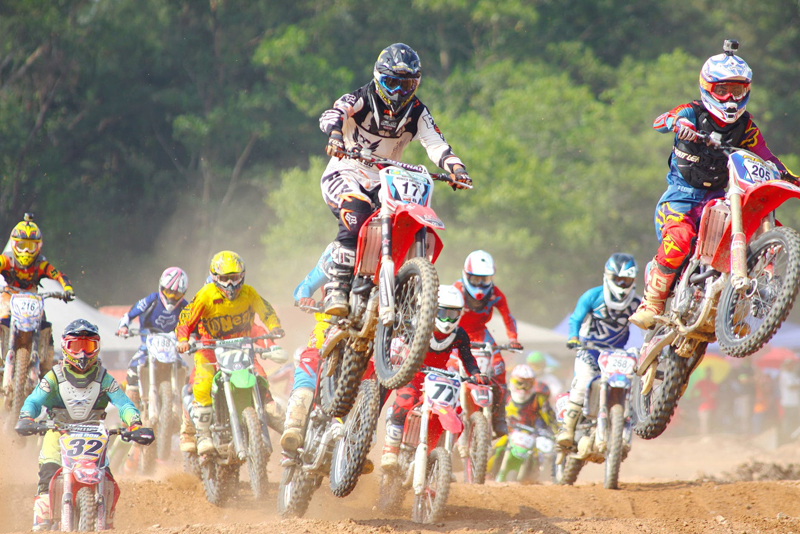Inside The Cockpit

It looks like a lot of fun, whizzing round a track at high speed and hopefully winning. But it's not easy, and the drivers that make it to Formula 1 are not known as the best for no reason. But what is life like in the cockpit?
Getting In
Firstly, it's very, very, low. The idea is to keep the driver as flat as possible, and as low to the ground as possible. The centre of gravity is an important consideration. Therefore, the drivers are practically lying down. For shorter people, it's not so bad. Pedals can always be moved forward. But if you are one of the taller ones on the grid, you have to bend your knees more to fit. This results in bruised knees as you fly over the kerbs on the circuit.
With your legs tucked away in the nose of the car, and a steering wheel fitted into place after you are in position, the cockpit can be incredibly claustrophobic. Everyone outside the car is so much higher up than you, whilst you are strapped in and basically stuck inside. Drivers prefer to be strapped in tightly to the cars so that they can tell the difference between their movements and the bodywork. Arms and legs need to be as unrestricted as possible, however, to aid their driving style.
Going Fast
During a race, the heat is incredible. Many of the tracks on the calendar are in high temperature countries such as Bahrain and Malaysia. The colour of your sponsors can add to the problem, if they prefer a black paintjob that will absorb the heat. Add to that the heat driving so fast will generate, from the engine to the tyres, all around the driver. The extra protection drivers wear, gloves, helmet, racing suit, can also raise body temperatures. Given these facts, drivers can lose as much as 1.5 kilos of their body weight during an entire race distance. They have to stock up on liquids beforehand.
The protections are essential though, cornering at high speeds causes enormous forces on the head and neck of the driver, and concentration has to be at an all time high. The aim of a driver is to expend as little energy as possible so that they have enough reserves to maintain concentration for the 70 or so laps.
In fact, a pit stop can be the only breather a driver gets, and they only last 6-8 seconds, so there is no chance for a rest.
To sum up, you only need to remember one thing, a driver's comfort is an afterthought. Speed is the only thing that matters.
Getting In
Firstly, it's very, very, low. The idea is to keep the driver as flat as possible, and as low to the ground as possible. The centre of gravity is an important consideration. Therefore, the drivers are practically lying down. For shorter people, it's not so bad. Pedals can always be moved forward. But if you are one of the taller ones on the grid, you have to bend your knees more to fit. This results in bruised knees as you fly over the kerbs on the circuit.
With your legs tucked away in the nose of the car, and a steering wheel fitted into place after you are in position, the cockpit can be incredibly claustrophobic. Everyone outside the car is so much higher up than you, whilst you are strapped in and basically stuck inside. Drivers prefer to be strapped in tightly to the cars so that they can tell the difference between their movements and the bodywork. Arms and legs need to be as unrestricted as possible, however, to aid their driving style.
Going Fast
During a race, the heat is incredible. Many of the tracks on the calendar are in high temperature countries such as Bahrain and Malaysia. The colour of your sponsors can add to the problem, if they prefer a black paintjob that will absorb the heat. Add to that the heat driving so fast will generate, from the engine to the tyres, all around the driver. The extra protection drivers wear, gloves, helmet, racing suit, can also raise body temperatures. Given these facts, drivers can lose as much as 1.5 kilos of their body weight during an entire race distance. They have to stock up on liquids beforehand.
The protections are essential though, cornering at high speeds causes enormous forces on the head and neck of the driver, and concentration has to be at an all time high. The aim of a driver is to expend as little energy as possible so that they have enough reserves to maintain concentration for the 70 or so laps.
In fact, a pit stop can be the only breather a driver gets, and they only last 6-8 seconds, so there is no chance for a rest.
To sum up, you only need to remember one thing, a driver's comfort is an afterthought. Speed is the only thing that matters.
This site needs an editor - click to learn more!

Related Articles
Editor's Picks Articles
Top Ten Articles
Previous Features
Site Map
Content copyright © 2023 by Christine Blachford. All rights reserved.
This content was written by Christine Blachford. If you wish to use this content in any manner, you need written permission. Contact
BellaOnline Administration
for details.


